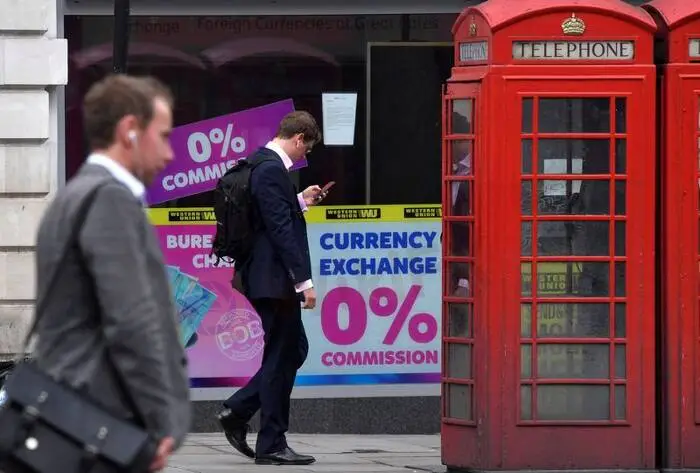简体中文
繁體中文
English
Pусский
日本語
ภาษาไทย
Tiếng Việt
Bahasa Indonesia
Español
हिन्दी
Filippiiniläinen
Français
Deutsch
Português
Türkçe
한국어
العربية
Sterling hits new lows against dollar, euro after BoE warning
Abstract:Sterling fell below $1.23 for the first time in nearly two years against a strengthening dollar on Friday, after a plunge in the previous session as the Bank of England warned about recession risks, dampening expectations about future monetary tightening.
Sterling hit new lows against the dollar and the euro after the Bank of England warned of recession risks, triggering expectations of a slowdown in its rate-hiking cycle.
The pound, which slid more than 2% on Thursday in its biggest daily drop since March 2020, was set to end Friday with its third straight week of declines.
It has taken a beating from expectations that the BoE may have to pause its monetary tightening earlier than expected, given the economic hit from a cost of living crisis.
Most BoE policymakers believed “some degree of further tightening in monetary policy may still be appropriate in the coming months”. A split emerged, with two members saying the guidance was too strong given the risks to growth.

“The shift in the wording of the guidance suggests a committee that perhaps thinks it may not have much further to go,” Citi analysts said in a note.
People and businesses in Britain need to realise they are unlikely to recover the income lost to high inflation any time soon, the Bank of Englands chief economist said on Friday in the latest warning from the central bank.
Sterling was down 0.1% at $1.2339, after hitting its lowest level since June 2020 of 1.2276.
It fell 0.5% to 85.91 against the euro, its lowest since December 2021.
The dollar edged down on Friday but remained near 20-year highs against major peers, while the euro jumped on European Central Bank members talking up a return to positive rates this year. [nL2N2WY0LA]
“Markets interpretation of the BoE is to price out excessive future rate hikes and acknowledge the slower growth UK will endure going forward,” Grace Peters, EMEA head of investment strategy at JPMorgan Private Bank, said.
Money markets are currently pricing 120 bps of BoE rate hikes by year-end, including 50 bps by August 2022.
“The key for us is how close the forecasted inflation rate (2.16%) is to the 2.0% target with bank rate remaining at 1.00%,” said Derek Halpenny, head of research global markets EMEA and international securities at MUFG Bank.
“That, in addition to the sheer scale of deceleration in GDP growth, are compelling reason to believe a long pause is coming after a June hike,” he added.
Meanwhile, British Prime Minister Boris Johnsons Conservative Party lost control of traditional strongholds in London and suffered losses elsewhere in local elections, early results on Friday showed, as voters punished his government over a raft of scandals.
(Reporting by Stefano Rebaudo; Additional reporting by Sujata Rao; Editing by Andrew Heavens)
Disclaimer:
The views in this article only represent the author's personal views, and do not constitute investment advice on this platform. This platform does not guarantee the accuracy, completeness and timeliness of the information in the article, and will not be liable for any loss caused by the use of or reliance on the information in the article.
WikiFX Broker
Latest News
Brazilian Man Charged in $290 Million Crypto Ponzi Scheme Affecting 126,000 Investors
Become a Full-Time FX Trader in 6 Simple Steps
ATFX Enhances Trading Platform with BlackArrow Integration
Decade-Long FX Scheme Unravels: Victims Lose Over RM48 Mil
The Top 5 Hidden Dangers of AI in Forex and Crypto Trading
5 Steps to Empower Investors' Trading
How to Find the Perfect Broker for Your Trading Journey?
The Most Effective Technical Indicators for Forex Trading
What Can Expert Advisors Offer and Risk in Forex Trading?
Indian National Scams Rs. 600 Crore with Fake Crypto Website
Currency Calculator






